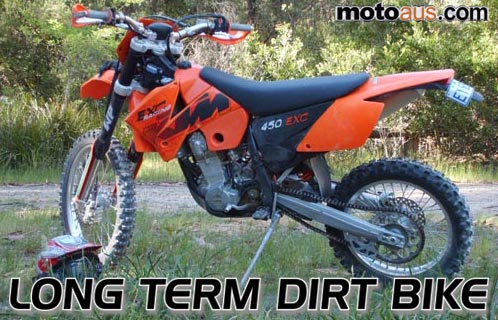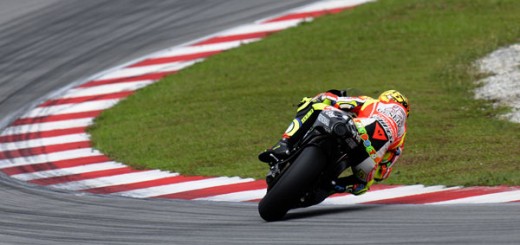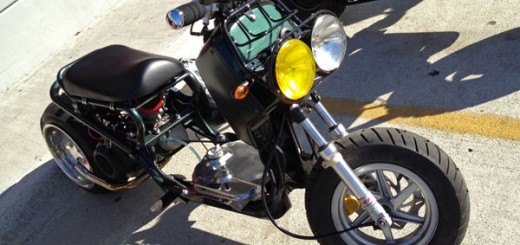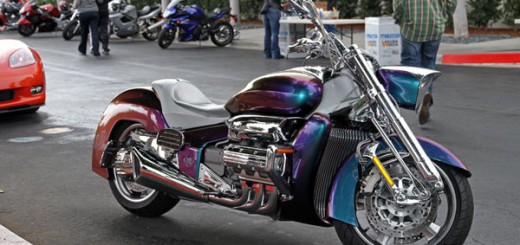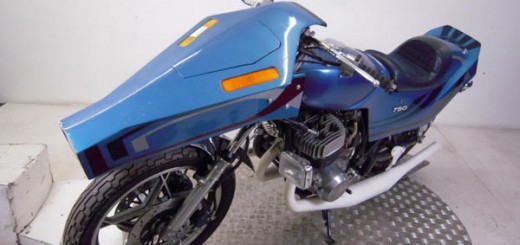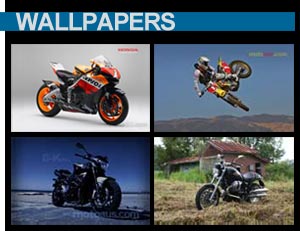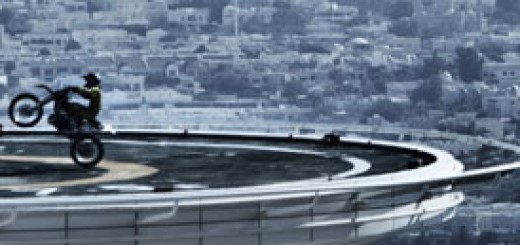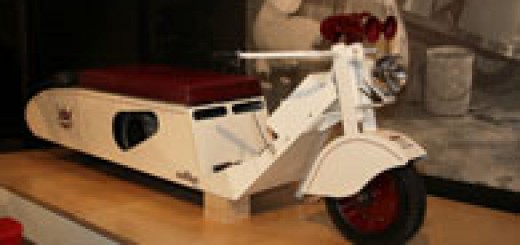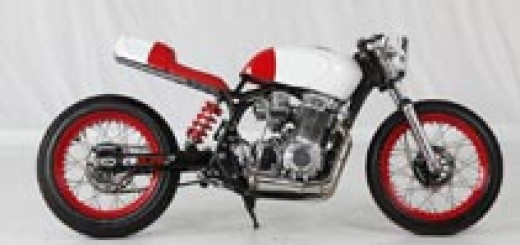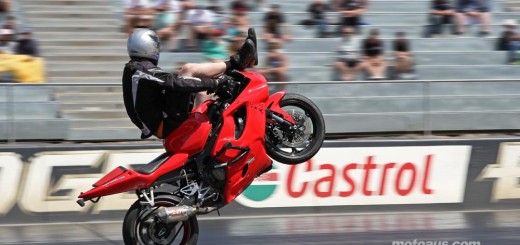BMW’s New 450 Sports Enduro
BMW have released details on their new 450 Sports Enduro machine, which is undergoing testing and development through a race program involving a number of riders including Joel Smets. The bike sports a number of patented ideas which BMW is trialling.
Off-road racing is inseparably linked to BMW motorcycles. The multiple victories of BMW motorcycles in the Paris-Dakar rally are still in recent memory, but the tradition goes much further back than this. Over the last eighty years, not just success in road racing but also outstanding results off the tar have attracted great interest.

After the success of the HP2 sports flat twin enduro in competitions such as the German Cross Country Series, the race at Pikes Peak and the Erzberg, BMW is now expanding its off-road involvement to include the attractive and prestigious E2 class, in which 450 cc 4-stroke machines and 250 cc 2-stroke sports enduros will be entered for competition.
In this class, BMW will be testing the concept of a 450 cc single cylinder enduro machine which is mainly designed for sports use. Here, BMW is not content simply to implement the design features typical of the class but combines these with completely new technological solutions which are characteristic of BMW in terms of engine and chassis, thus continuing its off-road sporting tradition and giving the brand a striking, distinctive profile in an off-road context, too.
In the 2007 season, the innovative, patented technology of the single cylinder sports enduro concept will be put to the acid test in numerous competitive races.
What is more, BMW has been able to secure the services of experienced off-road professionals Sascha Eckert, Joel Sméts and Simo Kirssi who will contribute their skill and experience to the process of testing under the toughest conditions, as well as the optimisation and further development of the concept.
BMW’S Innovative Technology

The concept for the new BMW sports enduro started with an idea: if the mounting axis of the rear swing arm were to coincide with the axis of rotation of the drive chain pinion, there would be no change in length of the chain on compression and rebound. Then, without changing the wheelbase, with a longer swing arm, the engine could move further back, allow more cylinder tilt and thus create space for long, straight induction tracts with a dual throttle valve system (to help with Euro III exhaust emission compliance).
The fuel tank could be placed directly beneath the rider, the clutch could go on the crankshaft, with the frame tubes straight ahead of the swing arm pivot, and the airbox could be placed as high as possible for optimum protection.
In short: create a package with significant benefits in terms of traction, centralisation of masses and stability and with a low weight, vital for an offroad motorcycle.
The man who put this idea into practice was Markus Theobald, a BMW Motorrad development engineer with off-road experience and one of the fathers of the successful BMW HP2 Enduro. He thought through the concept and consistently implemented the advantages: the swing arm, made of welded light alloy profiles, is 30 mm longer even though the wheelbase was at competitive level – thus improving traction properties.
 And the shift of the clutch onto the crankshaft creates space behind the engine allowing a new straight frame and ideal support for the swing arm pivot against the steering head. This concept idea was registered for a patent by Markus Theobald for BMW in 2005.The first prototype was instantly impressive and reflected the benefits in practice.
And the shift of the clutch onto the crankshaft creates space behind the engine allowing a new straight frame and ideal support for the swing arm pivot against the steering head. This concept idea was registered for a patent by Markus Theobald for BMW in 2005.The first prototype was instantly impressive and reflected the benefits in practice.
Thus the green light was given to test the concept under the tough conditions of competitive enduro racing and to develop it in further detail.
Technical features of the racing bike.
The racing motorcycle has been designed based on these ideas. The frame forms a composite triangle made of high-precision premium steel tubing actually developed for crash structures and rarely used in motorcycle construction. Two arched tubes lead from the steering head via the engine to the swing arm pivot.
The swing arm pivot is supported via the shortest possible distance by the steering head, pointing at an angle towards the front via two straight tubes. This construction requires minimum use of material and thus allows a hitherto unequalled relationship between rigidity and weight. This frame layout is only possible in conjunction with the clutch position on the crankshaft as mentioned above and a cylinder which is tilted far forward.
The rear frame is formed by lightweight square profiles made of light alloy which are bolted to the main frame.The coaxial mounting of the swing arm and the chain pinion had to be solved in a practical manner. In the current design, the swing arm pivot mounted on the frame leads through the hollow gearbox output which bears the drive pinion.
To change the pinion, the motorcycle is jacked up, the swing arm pivot is pulled out and the swing arm with mounted wheel is folded backwards. A practised mechanic can do it in 15 minutes. The other chassis elements are conventional and are in keeping with the high standard of the class.
The front wheel control is provided by an adjustable upside-down fork by Marzocchi with a spring travel of 300 mm. Suspension and damping of the rear wheel is taken care of by a directly linked, progressively operating Öhlins suspension strut with a spring travel of 320 mm. Set on an angle, it is supported directly by the rigid main frame.
The engine of the competition prototype is 450 cc high-performance single cylinder 4-stroke engine designed by BMW with two upper camshafts and dry sump lubrication. A special feature which is unique in this class is the fuel injection and oxygen sensor regulation. The position of the cylinder, tilted far forwards, enables virtually straight intake air ducting into the large-volume airbox positioned above the engine.
This provides excellent conditions for optimum engine performance tune-up. This favourable overall arrangement was made possibly by the fuel tank position below the rider’s seat, familiar from the existing single cylinder models, with all its advantages in terms of the centre of gravity.

Another unique feature is the position of the clutch: it is located on the right end of the crankshaft and was thus given extremely compact dimensions since it rotates with the engine due to a lack of a speed-reduction ratio of the primary drive: it therefore has to transfer a lower level of torque. An intermediate shaft with integrated ventilation function transfers the power from the crankshaft to the gearbox. An electric start is obligatory.
The chain drive to the rear makes do without additional tensioning devices and channels due to the fact that chain sag is barely necessary any longer and the chain retains a constant length – another weight-saving factor. The load-alteration effect on the powertrain is reduced, chain stress is also reduced and generous chain encapsulation become feasible.
The performance figures of the engine are at competitor level, though further details will be revealed at a later stage. This also applies to the total vehicle weight – even the first concept vehicle achieved levels in the range of the established representatives of this motorcycle class.

While the motorcycle has appeared entirely in black at test runs to date, its baptism of fire in Puerto Lumbreras will see it presented for the first time in the typical BMW Motorrad Motorsport colours. Markus Theobald and the BMW team see themselves as “testing novices” at the World Cup race in Spain and at other upcoming events this season. At this development stage, it is not about racing success but about gaining well-founded testing insights which lead to development progress.
ENDS.

